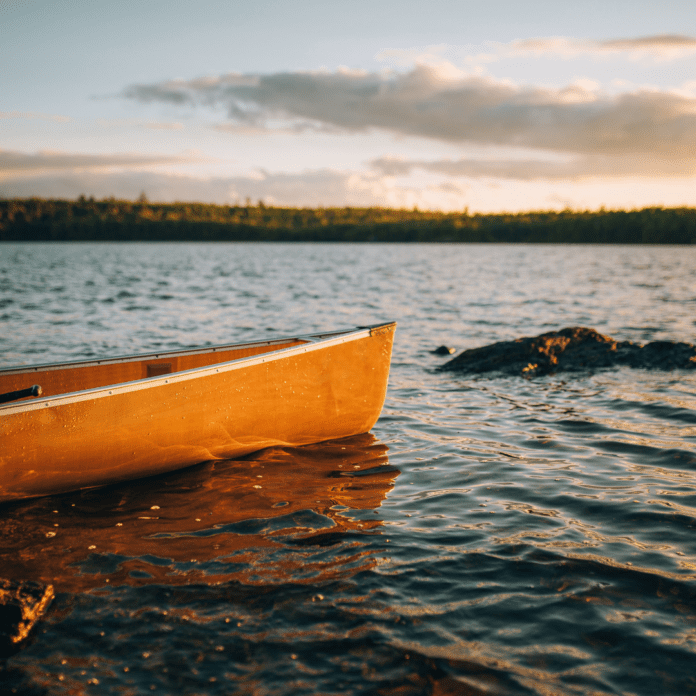After consideration of over 4,000 public comments and extensive analysis, the Minnesota Department of Natural Resources (DNR) filed its decision with the Ramsey County District Court regarding the adequacy of the nonferrous mine siting rule to protect the Boundary Waters Canoe Area Wilderness (BWCAW). The decision comes in response to a court order in litigation with Northeastern Minnesotans for Wilderness (NEMW) under the Minnesota Environmental Rights Act.
In the 74-page decision, the DNR found that the nonferrous mine siting rule (Minn. R. 6132.2000) is largely protective, but should be reopened to better address the potential for mining-related noise and light impacts on the BWCAW. To address the potential noise and light impacts, the DNR will initiate rulemaking to expand the existing Mineral Management Corridor to provide a greater setback from the BWCAW for mining activities that would disturb the surface.
With the exception of noise and light as discussed above, the DNR found that the siting rule, in conjunction with other existing state and federal environmental protection laws, is adequate to protect the BWCAW from potential water, air, and other impacts from nonferrous mining. The State of Minnesota already applies the most protective water quality standard available, Prohibited Outstanding Resource Value Water, to the BWCAW. This essentially prohibits issuance of a water quality permit that would have a measurable impact on waters of the BWCAW. Similarly, the BWCAW is afforded the highest level of air quality protection in federal law.
The DNR’s decision as outlined above addresses the legal question raised in this case — is the current nonferrous mine siting rule protective of the BWCAW in combination with other regulatory controls? However, many of the comments that we received about the rule addressed fundamental questions about the State’s nonferrous mining policy and what level of risk should be allowed under that policy. Any decision to modify a fundamental state policy of this nature belongs in front of the legislature, rather than an executive agency. The DNR recognizes that some nonferrous mining activities may pose greater long-term risks and would be inherently more challenging to regulate in the Rainy River Headwaters watershed. Therefore, the DNR is recommending that the legislature consider whether the following nonferrous mining practices in the watershed are compatible with protection of the BWCAW:
- above ground storage or disposal of waste tailings,
- permanent above ground storage of reactive waste rock,
- heap leaching, and
- smelting.
Background
On June 24, 2020, Northeastern Minnesotans for Wilderness (NEMW) sued the DNR under the Minnesota Environmental Rights Act. NEMW claims in its lawsuit that Minnesota’s longstanding nonferrous mine siting rule is inadequate to protect the BWCAW. Specifically, NEMW asserts that Minnesota Rule 6132.2000 (Subparts 2A and 3A) should prohibit nonferrous metallic mineral mining (e.g., copper-nickel mining) in the entirety of the Rainy River Headwaters watershed. Currently the rule prohibits mining in the BWCAW and prohibits mining that disturbs the surface in the Minerals Management Corridor around the BWCAW. Twin Metals Minnesota, LLC (Twin Metals) intervened in the lawsuit and, therefore, is also a party to this case.
In accordance with the Ramsey County District Court order, NEMW and/or Twin Metals may, within 30 days, demand a contested case hearing regarding DNR’s decision.
Additional information can be found at https://engage.dnr.state.mn.us/siting-rule-review-nonferrous-mines.
Minnesota DNR Commissioner Sarah Strommen stated, “Today, we concluded that Minnesota’s nonferrous mine siting rule is largely protective of the Boundary Waters Canoe Area Wilderness (BWCAW), but should be reopened to better address the potential for mining-related noise and light impacts. In making this decision, I want to assure Minnesotans that we carefully evaluated all available information, including more than 4,000 public comments and the stringent regulatory framework that currently exists for the protection of the BWCAW.
We recognize that the Boundary Waters Canoe Area Wilderness is an extraordinary natural treasure and deeply important to our identity as a state. We received many comments that raised questions about the State’s policy and risk tolerance around nonferrous mining. We believe these broader policy questions are more appropriately addressed by Minnesota’s Legislature.”



